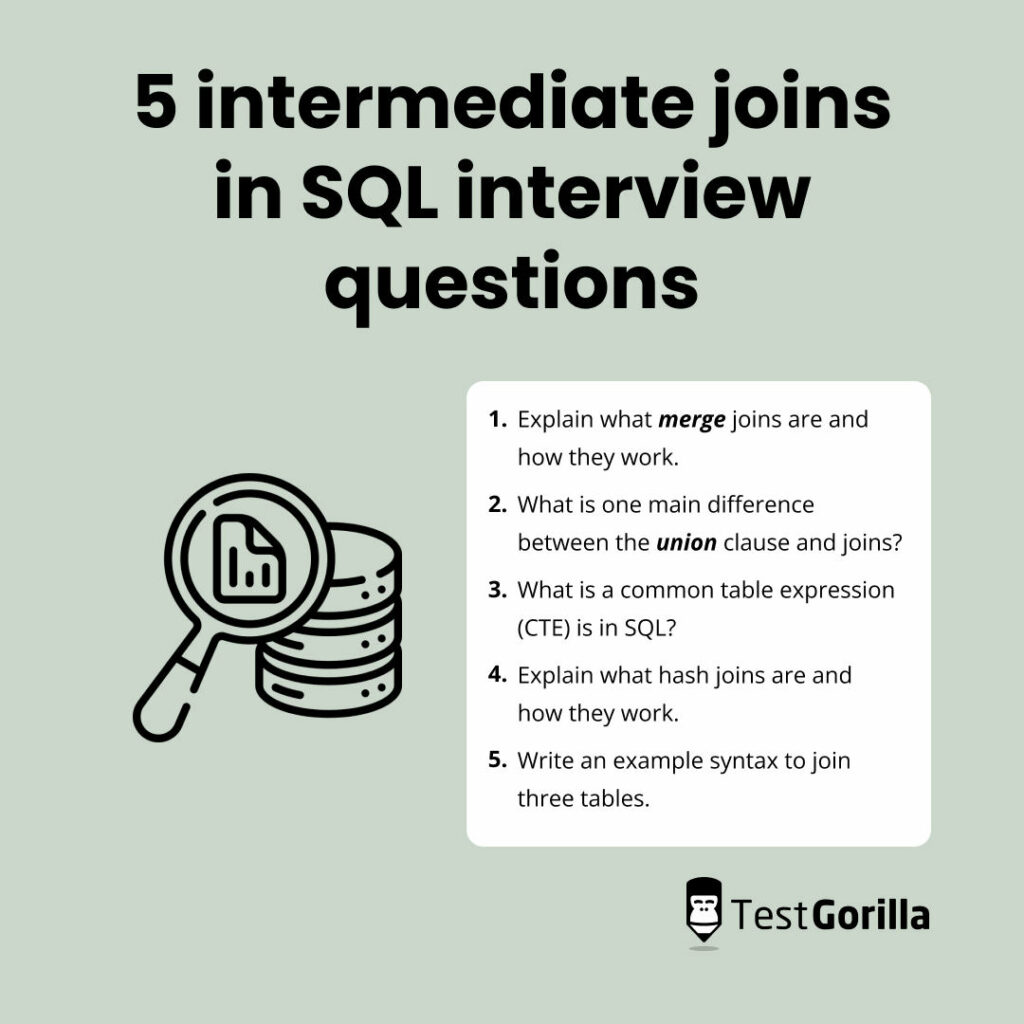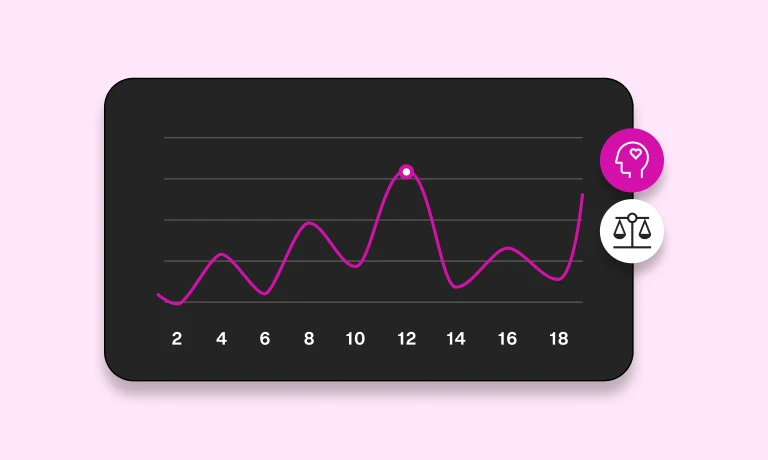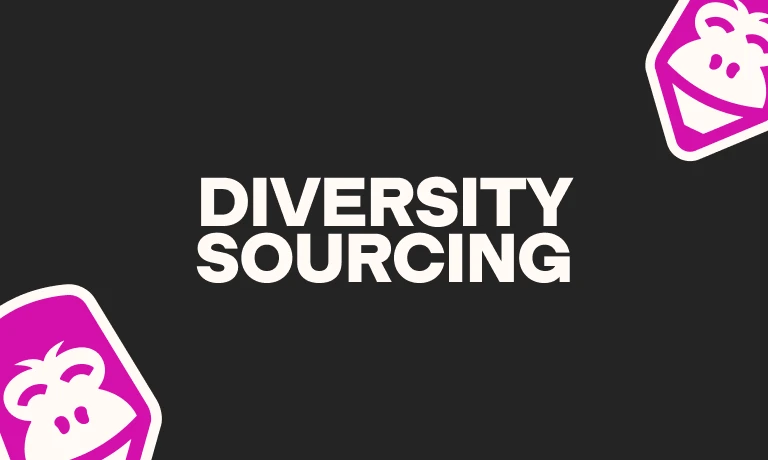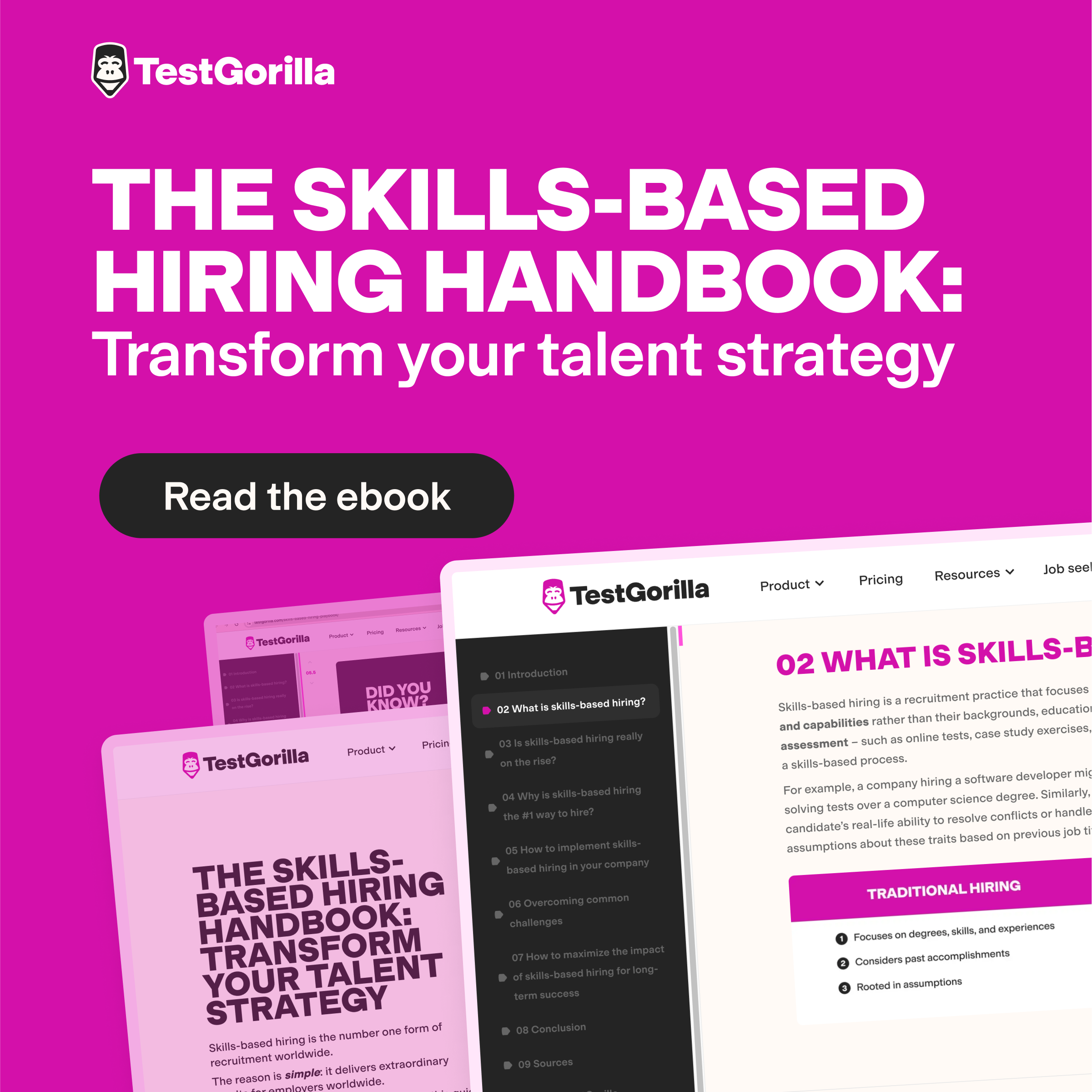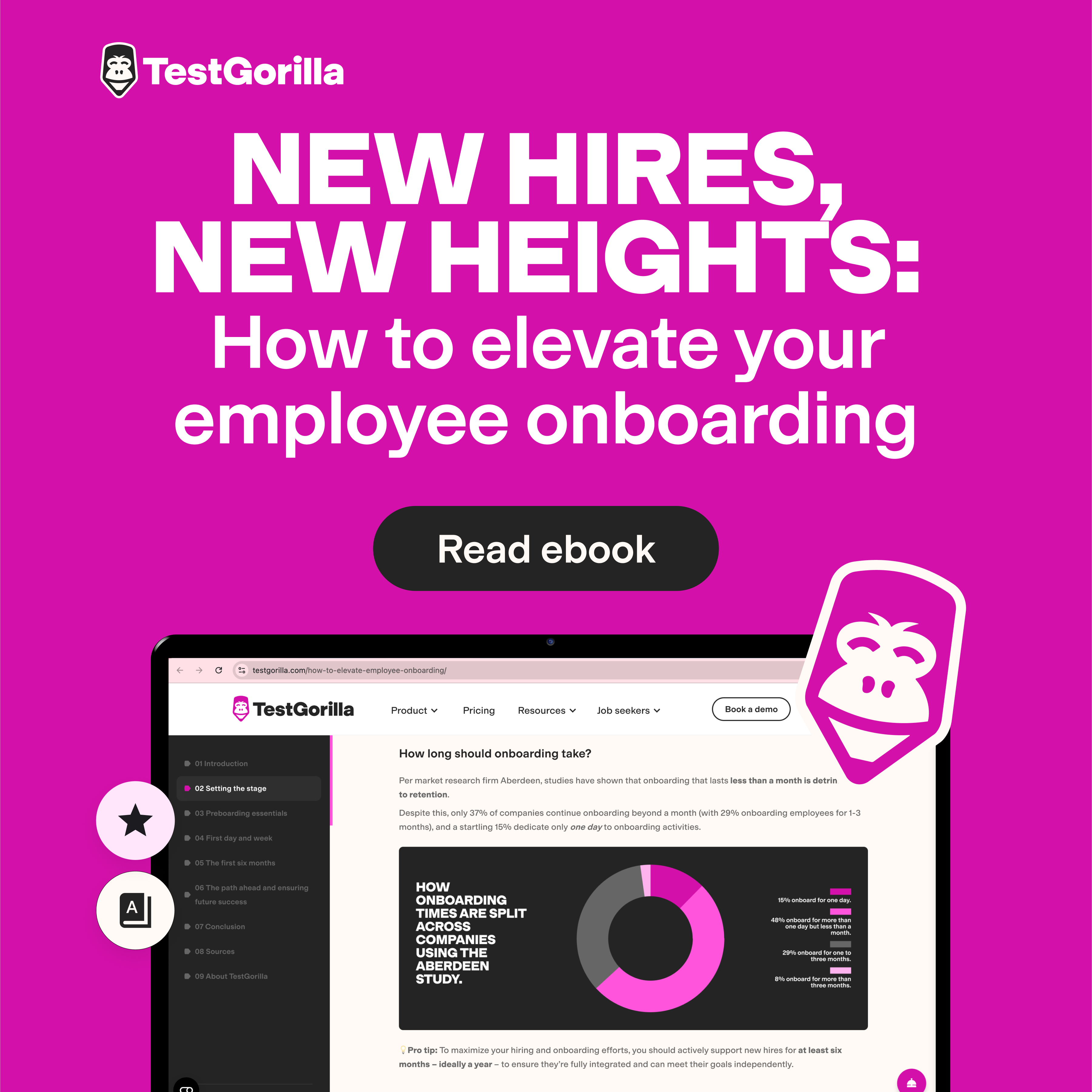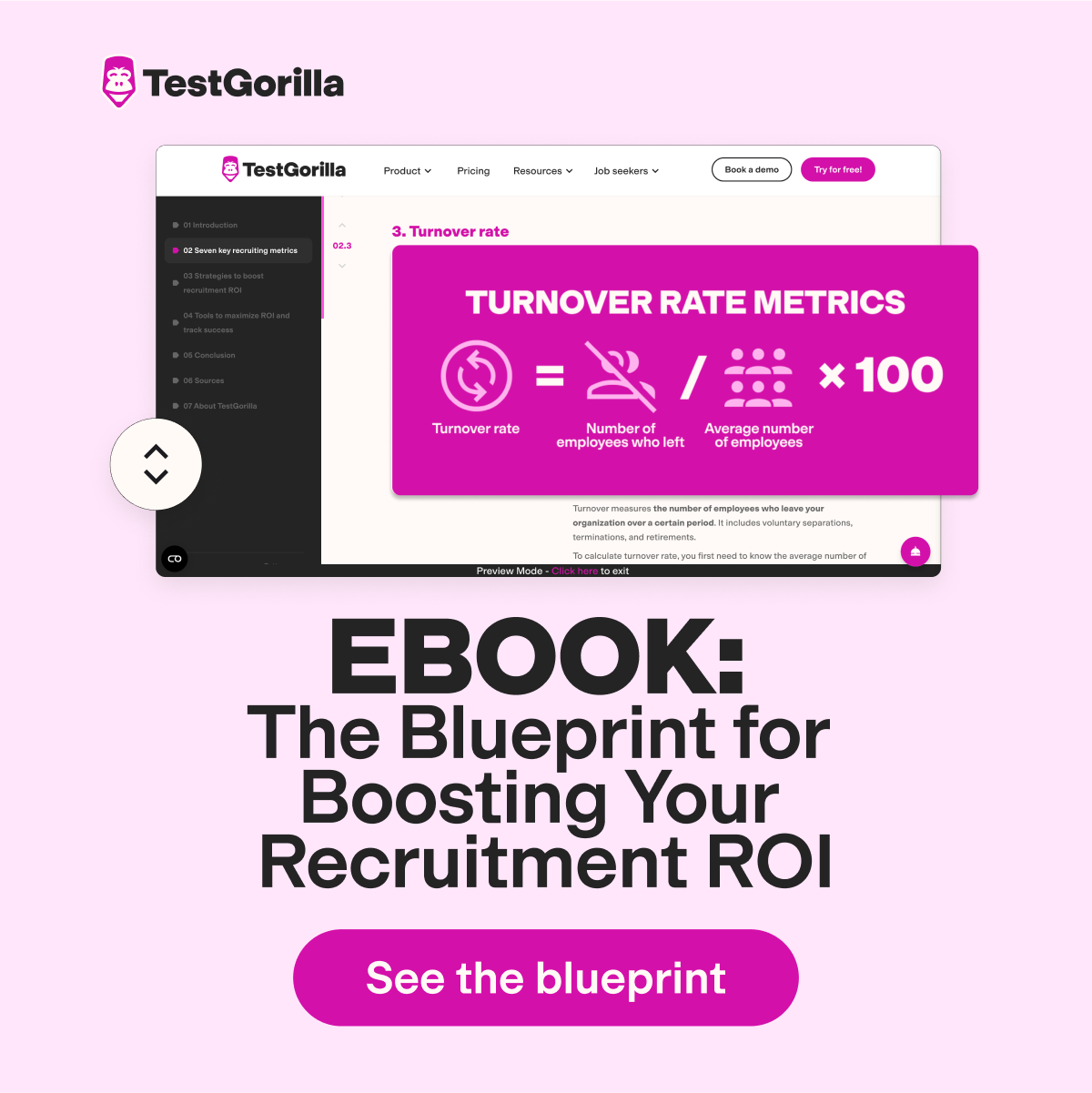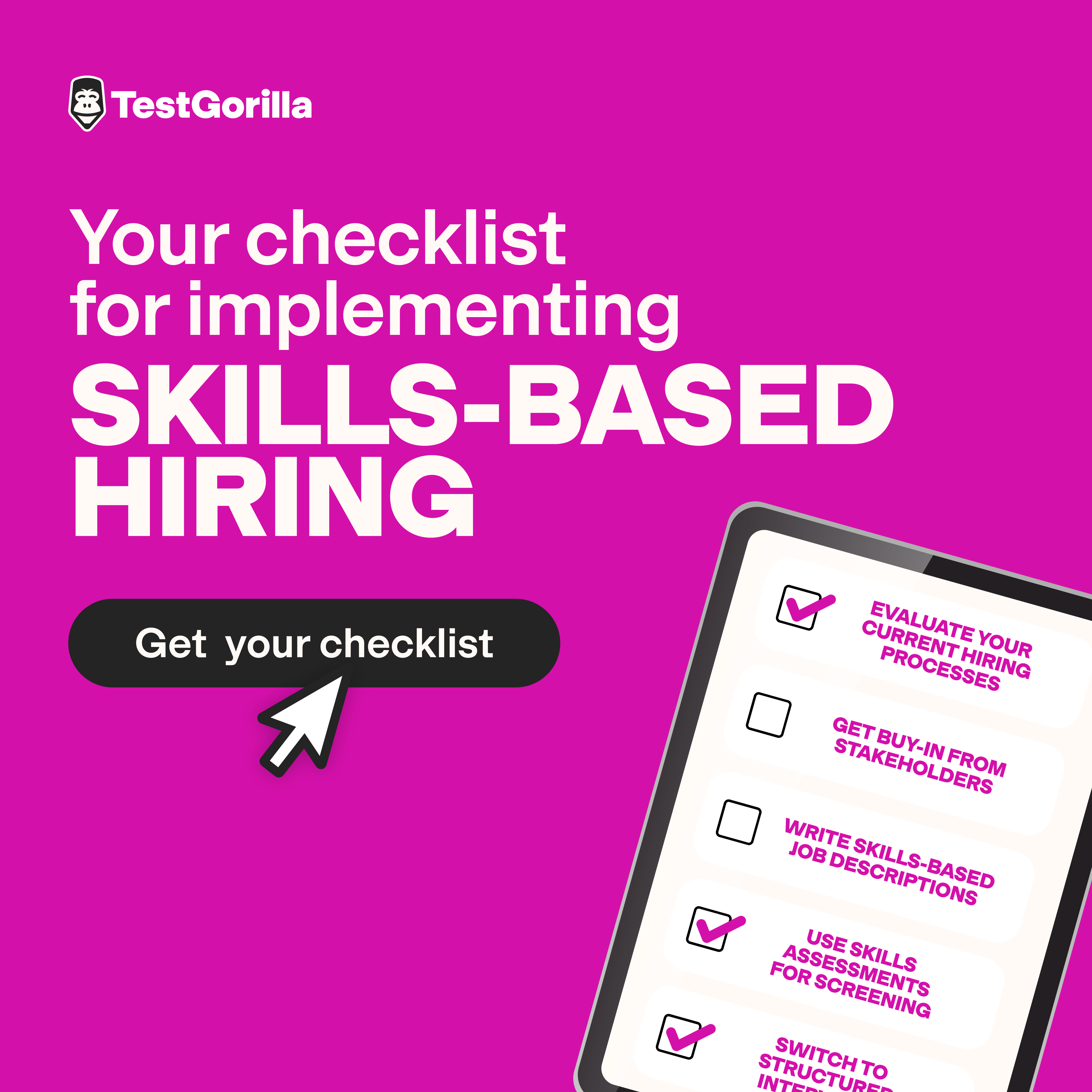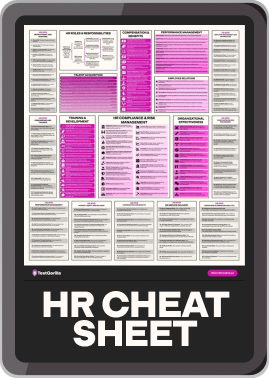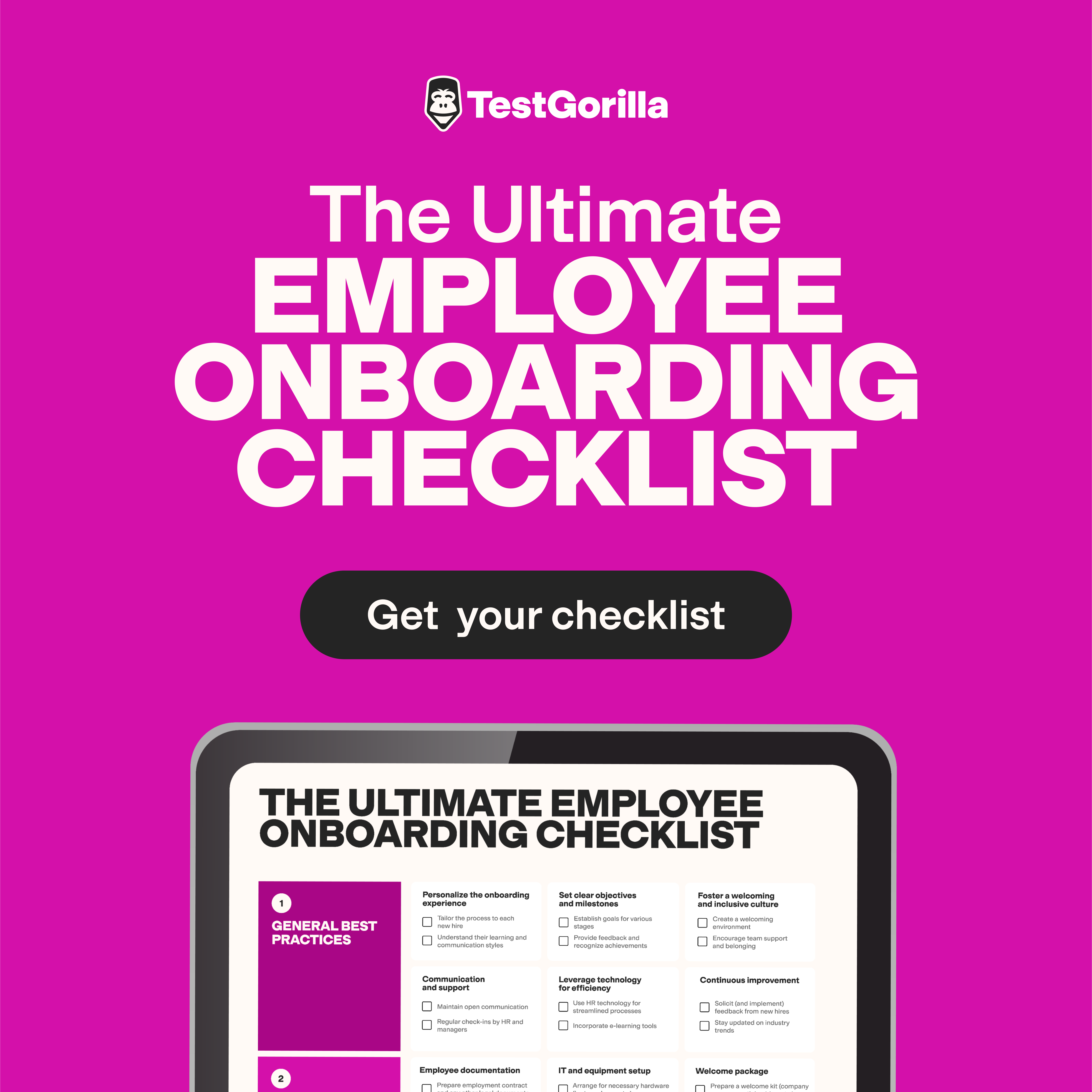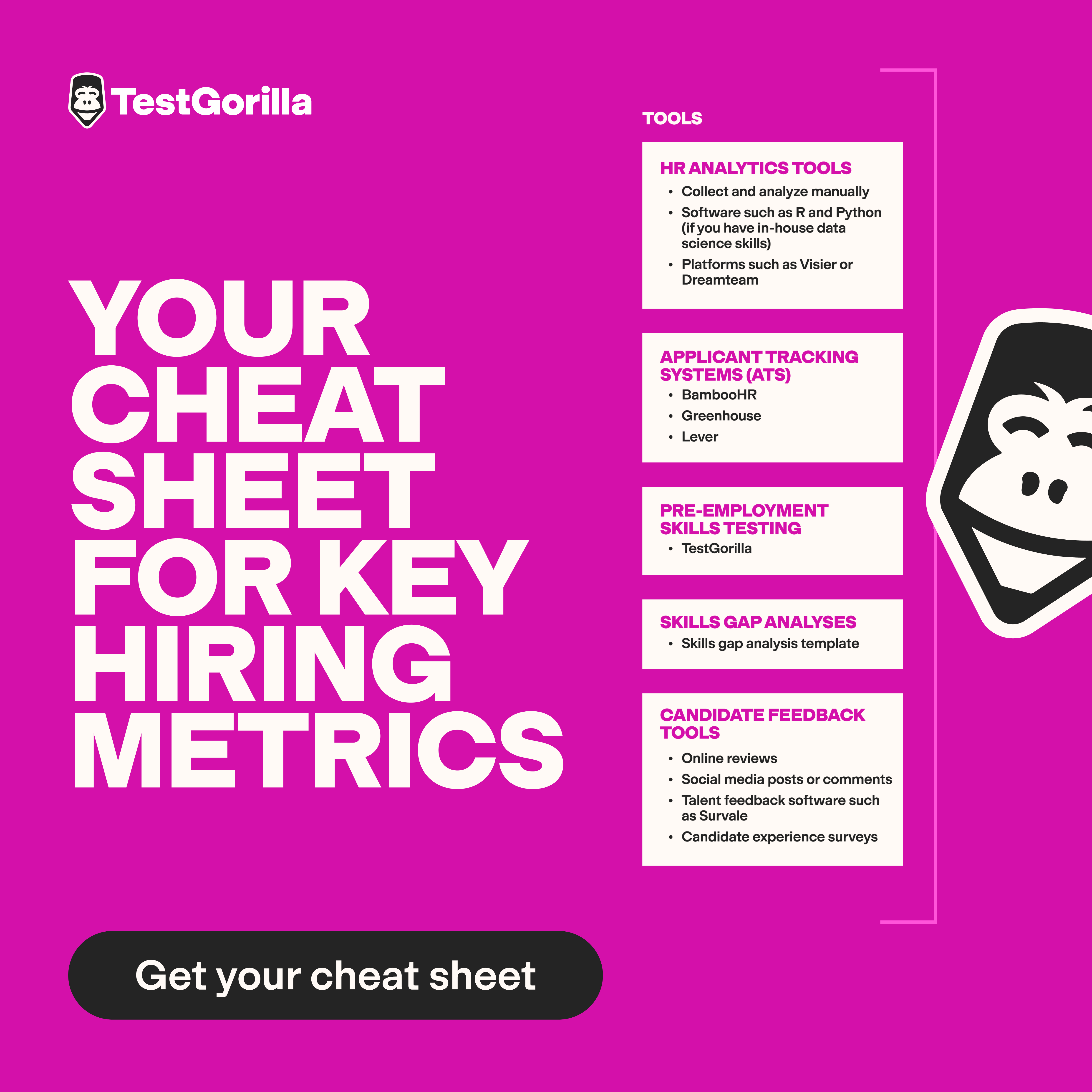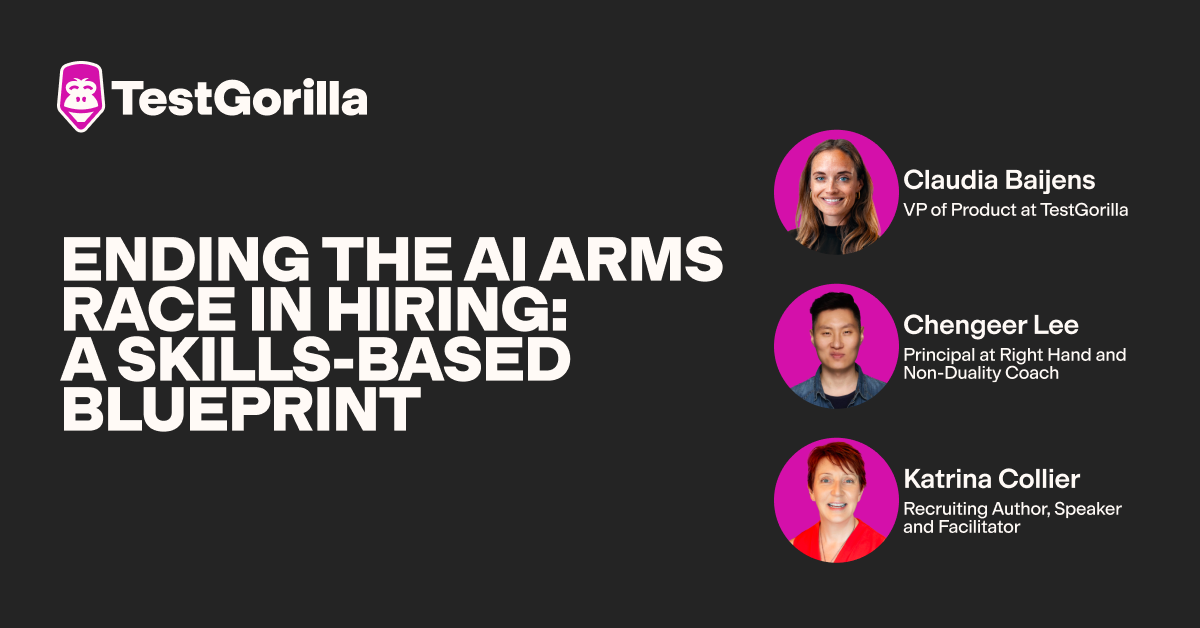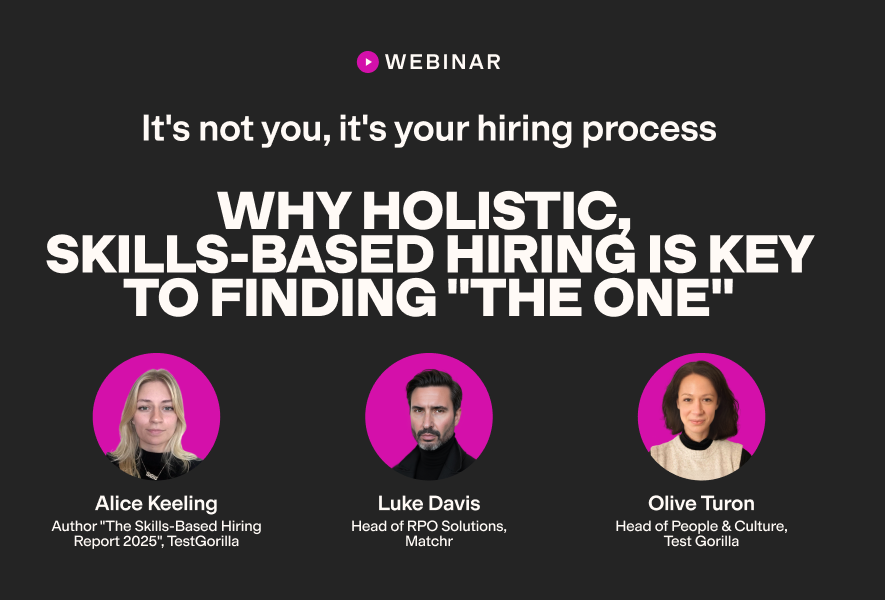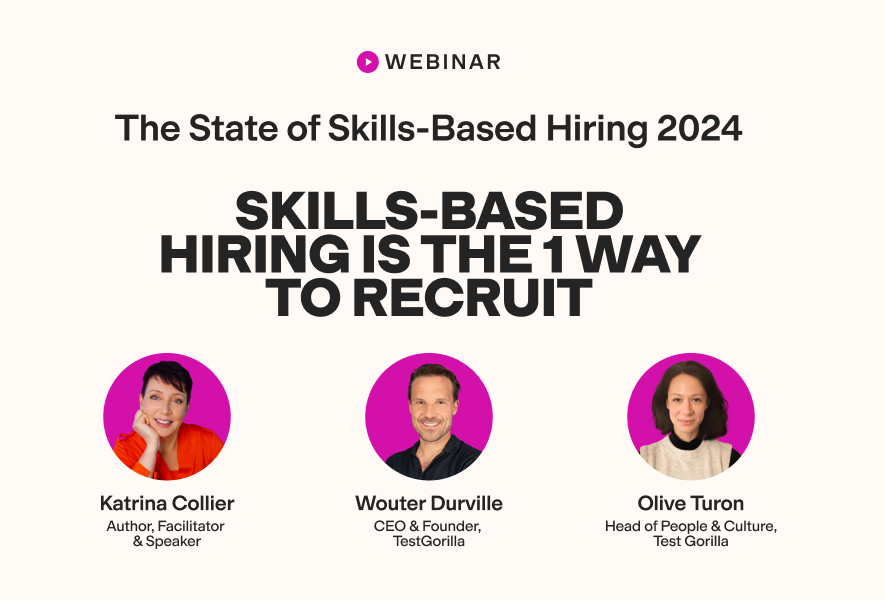33 joins in SQL interview questions to ask professional engineers
Are you looking for the best hiring strategy to find a professional SQL software engineer for your business? A simple combination of skill assessments and interview questions can help you quickly assess and find top talent for the job.
For your skills assessment, technical tests like an SQLite Database Operations test will show which applicants have the best SQL knowledge and expertise. But it’s best to look closer at your applicants’ knowledge in an interview to test their skills further.
With joins in SQL interview questions, you can check your candidates’ technical expertise. Discover 33 questions to ask in the interview for a comprehensive hiring process.
Table of contents
- 12 basic joins in SQL interview questions to ask junior engineers
- 5 basic joins in SQL interview questions and sample answers
- 10 intermediate joins in SQL interview questions to ask mid-level engineers
- 5 intermediate joins in SQL interview questions and sample answers
- 11 advanced joins in SQL interview questions to ask senior engineers
- 5 advanced joins in SQL interview questions and sample answers
- When should you use joins in SQL interview questions?
- Hire the best SQL programmer by asking candidates joins in SQL interview questions
12 basic joins in SQL interview questions to ask junior engineers
If you’re hiring a junior SQL engineer, check out these 12 basic joins in SQL interview questions and use them to test your candidates’ expertise.
1. Do you understand what SQL joins are? Can you explain what they do?
2. Could you name a few different examples of joins in SQL?
3. Tell us why database operation knowledge is important for SQL developers.
4. Is there a difference between self and inner join? Could you explain this?
5. Can you explain why SQL joins are crucial for database management?
6. Is there a difference between left and right join? Could you explain this?
7. Can you explain if a self join is an outer or inner join?
8. Do you understand the difference between cartesian and full join?
9. Tell us what natural join means.
10. Explain what equi join means.
11. Do you have any experience with SQL Server Management Studio? Tell us about it.
12. Is it possible to join an SQL table to itself?
5 basic joins in SQL interview questions and sample answers
With the sample answers to these basic joins in SQL interview questions, you’ll have no problem reviewing your candidates’ responses. Check the sample responses for a simple candidate review.
1. Do you have any experience with SQL Server Management Studio? Tell us about it.
In your applicants’ responses, you’re looking for an explanation of SQL Server Management Studio (SSMS) and their experience with it. Candidates should know that SSMS is a tool engineers use to create, design, and manipulate databases. From their experience, they should know that this tool works with SQL servers.
Checking if candidates know the advantages of SSMS and have benefitted from this tool is important. Consider if they know it provides high storage and can integrate with front-end applications.
Need a simpler approach to assess your candidates’ SSMS skills? Check out our SQL Server Management Studio skill test.
2. Is it possible to join an SQL table to itself?
Junior candidates should know that it’s possible to join SQL tables to themselves. They can complete this action using a self join clause, similar to a regular join, and joins records within the same table.
3. Do you understand what SQL joins are? Can you explain what they do?
Responses to this basic joins in SQL interview question should explain that the join component combines rows from a single or several tables within a relational database. With a join, applicants can create datasets to store in a tabular form.
Applicants should know that join clauses work based on one related column or matching fields between the tables. There are several types of SQL joins, including:
Inner joins
Left outer joins
Right outer joins
Cross joins
4. Can you tell us why SQL joins are crucial for database management?
Since SQL joins make databases easy to read, they are crucial for database management. But this isn’t the only factor candidates should mention – they might know that SQL joins normalizes data to reduce data loss, reduce data gaps, and help engineers quickly retrieve data with summary queries.
Engineers who use SQL joins can also maintain general data protection, which benefits organizations that are one of the 69.5% of companies that experience data hacking.
5. Tell us why database operation knowledge is important for SQL developers.
Applicants need proficiency in database operation management to manipulate and manage a relational database. Not only can this skill help developers leverage data that’s well structured, but it can also facilitate data management for significant amounts of data.
Listen out for responses that mention that engineers can manage different data types more easily with database operation knowledge and provide examples of their experience to support their knowledge.
Searching for a simple way to assess your applicants’ SQL database operation knowledge? Use our SQLite Database Operations test to find out more.
The best insights on HR and recruitment, delivered to your inbox.
Biweekly updates. No spam. Unsubscribe any time.
10 intermediate joins in SQL interview questions to ask mid-level engineers
When evaluating mid-level SQL engineers, using intermediate joins in SQL interview questions will help you dig deeper into your candidates’ knowledge.
1. Could you tell us what nested subqueries are?
2. What do you understand about correlated subqueries?
3. Can you tell us one main difference between the union clause and joins?
4. Are join conditions always based on equality? Explain your answer.
5. Tell us what you understand about hash joins and how they work.
6. Explain to us what you understand about merge joins and how they work.
7. Could you briefly explain what nested joins do in SQL?
8. Can you explain what a common table expression (CTE) is in SQL?
9. Could you write an example syntax to join three tables?
10. How would you create a one-to-many relationship? How would you structure the data?
5 intermediate joins in SQL interview questions and sample answers
Check out the sample answers to these intermediate joins in SQL interview questions for an easy way to review your interviewee’s responses and knowledge.
1. Explain to us what you understand about merge joins and how they work.
Some of the best answers to this joins in SQL interview question will be concise and easy to follow. Listen out for definitions that explain that merge join is one of the four operators developers use to join data from two inputs. With this join, developers end up with a single output from left and right input.
To use a merge join, applicants should know that developers must specify the type of join, the columns the join will use, and whether the process will handle null values as if they are the equivalent of other nulls.
2. Can you tell us one main difference between the union clause and joins?
One main difference between the union clause and joins is the context in which developers use them. A programmer typically uses a join if their tables share at least one attribute. In this case, the developer combines data into new columns.
On the other hand, programmers use the union clause to combine data into new rows.
3. Can you explain what a common table expression (CTE) is in SQL?
Optimum responses to this interview question will define CTEs and refer to the candidates’ experience using them. They might explain that common table expressions are temporary named result sets that developers retrieve from simple queries.
It’s also a good sign if candidates know that programmers reference these CTEs using delete, update, insert, or select statements, which proves their knowledge and experience using CTEs. Give top marks to applicants who know they should use the with clause to specify multiple CTEs and separate each statement with commas.
4. Tell us what you understand about hash joins and how they work.
As with many joins, hash joins require two inputs. But you should check if candidates can specify that inner and outer table inputs are important for hash joins and explain why. The best responses will also mention that this join can identify two tables’ matching rows and are ideal when a developer wants to join large, unsorted datasets.
5. Could you write an example syntax to join three tables?
For this joins in SQL interview question, it’s best to ask the candidate to write the syntax on paper and look for well-structured responses. One example syntax applicants may respond with is the following:
Select taba.col1, tabb.col2, tabc.col3 (columns to display) from tablea
Join ///Any join type
Tableb on taba.col1=tabb.col1 // any matching columns
Join /// Any join type
Tablec on tabb.col1=tabc.col1 // any matching columns
11 advanced joins in SQL interview questions to ask senior engineers
To determine which of your advanced SQL engineers has the optimum knowledge for your team and company, ask them some of these 11 advanced joins in SQL interview questions.
1. How would you create two tables that contain customers and products?
2. How would you order the customer and product names by their first name?
3. How would you retrieve every product name when they don’t match customer IDs?
4. Explain how SQL executes the inner join.
5. Explain how SQL executes the full outer join.
6. Do you have a method to eliminate a redundant column from SQL joins?
7. What do you understand about non-equi joins?
8. How would you use a subquery to execute an inner join for two or more tables?
9. Name one common error engineers make when using join in SQL.
10. Can you explain what OLTP means? How is it different from OLAP?
11. Name one SQL join skill you need to improve.
5 advanced joins in SQL interview questions and sample answers
Discover five sample answers to advanced joins in SQL interview questions to assess your candidates’ responses and learn about their proficiency.
1. Do you have a method to eliminate a redundant column from SQL joins?
The top answers to this interview question will mention that the using clause is essential for eliminating redundant columns. For example, if a database table contains two customer_id columns, a developer can use the following syntax with the using clause to remove one:
SELECT *
FROM customers
INNER JOIN customer_id
USING (customer_id);
Sqlite:///joins.db
However, there is an alternative option skilled candidates might provide, which requires developers to use the natural join clause. The syntax developers should use for this approach is:
SELECT *
FROM customers
NATURAL JOIN customer_id
Sqlite:///joins.db
2. How would you put the consumer and product names in order by their first name?
With the right SQL joins and queries, applicants can easily put consumers and products in a specific order in a table according to the consumers’ first names. You should expect applicants to write a query on a paper to show their response. One example of the correct syntax for this question is the following syntax:
SELECT a.first_name,b.name_of_product
FROM [consumer] A
INNER JOIN [product] B
ON A.consumer_id – B.consumer_id
ORDER BY a.first_name
3. Name one SQL join skill you need to improve.
Whether applicants need to improve their query structure abilities or understanding of the Microsoft SQL Server, what’s important is that they have a strategy to hone their skills.
You’ll find that some applicants complete side projects to enhance their knowledge and that others are committed to completing training or courses.
It’s a red flag if your applicants don’t want to learn new skills – it indicates that they might not want to use new abilities to complete complex projects or increase their productivity.
Our platform has many skills tests, such as our Microsoft SQL Server test, ideal for assessing your applicants’ SQL database design and performance optimization abilities. Use them in your hiring process for an objective screening approach.
4. Name one common error engineers make when using join in SQL.
A common problem that applicants should be aware of when using join in SQL is that many types of joins exist. Engineers must implement specific join types to avoid receiving a cross join return. The main reason for this is when they later analyze the cross join, this will produce an incorrect result.
Some applicants might also mention that failing to use conditional responses with joins will produce incorrect results, so using them for this process is crucial.
5. Can you explain what OLTP means? How is it different from OLAP?
OLTP means online transaction processing. It’s a system that enables large teams to complete significant data processing actions in real-time via the Internet. Any data modification, addition, removal, or query in OLTP processes counts as a database transaction.
There’s a difference between OLTP and OLAP. OLAP means online analytical processing, and it’s a system programmers use to analyze historical data from OLTPs.
The real test of your applicants’ knowledge comes when you consider whether they have OLTP and OLAP experience. Check if they have used these systems and understand the advantages they provide programmers.
When should you use joins in SQL interview questions?
There’s an ideal moment in the hiring process to use joins in SQL interview questions – after applicants complete their skills assessment. It’s the optimal way to select candidates for an interview, helping you to:
Compare several candidates with similar skills
Reduce your time-to-hire metrics
You can easily build a skills assessment using the TestGorilla platform. Select a mixture of skills tests related to joins in SQL or soft skills to assess your candidates’ abilities before the interview stage.
Then, get extra qualitative data directly from your applicants by asking them joins in SQL interview questions when you meet them.
Hire the best SQL programmer by asking candidates joins in SQL interview questions
There’s no easier way to hire top SQL programmers than to combine skills assessments with engaging interview questions.
Check the TestGorilla platform for more information about building an assessment, and choosing the right skills tests for your assessment. Then start creating your list of questions with this guide and other SQL-related interview questions.
Hiring SQL programmers is easy with TestGorilla. Use our platform to choose the best talent for your team. Sign up for your free plan today, or book your free 30-minute live demo.
You've scrolled this far
Why not try TestGorilla for free, and see what happens when you put skills first.


